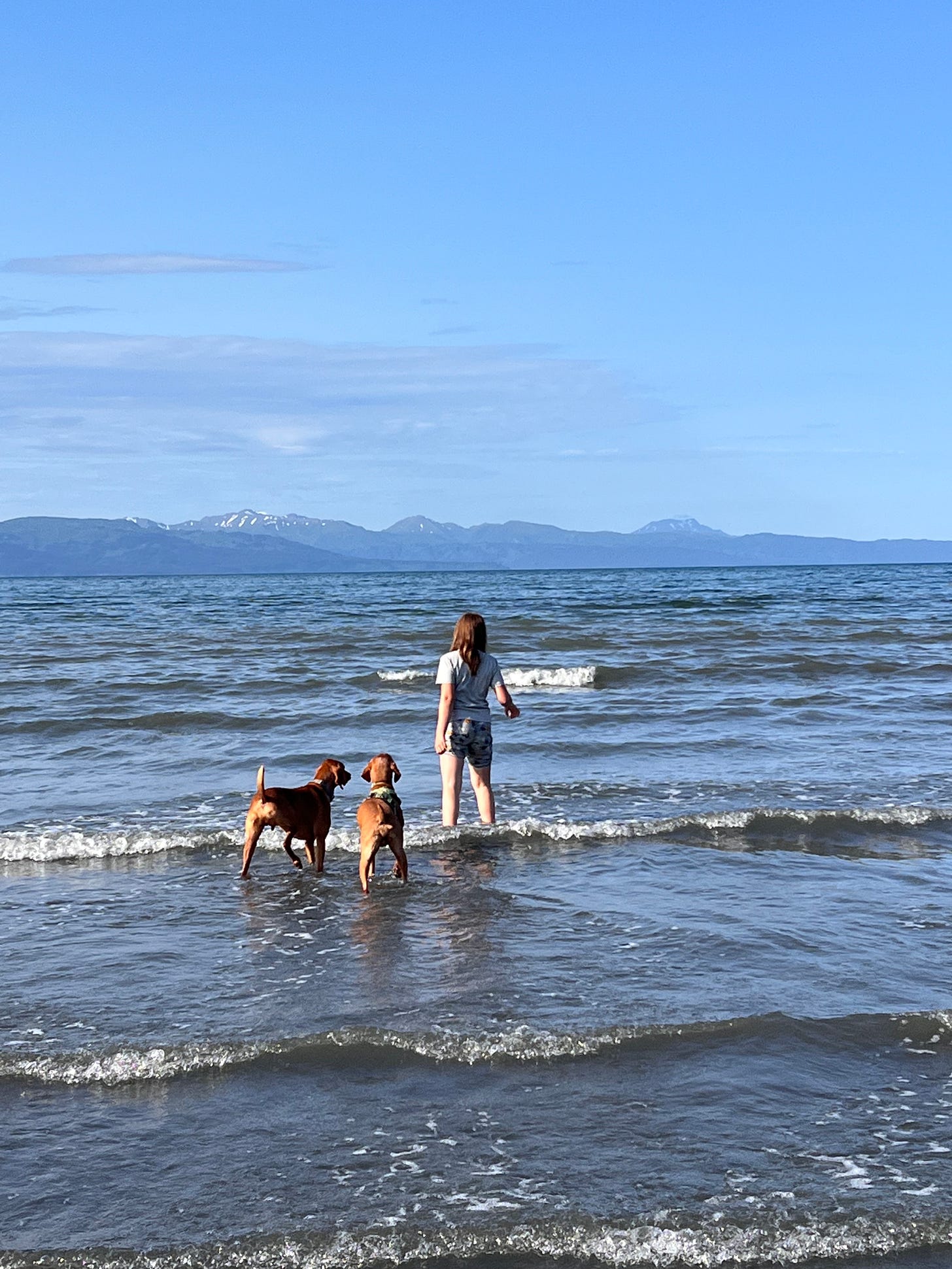Curious Nature
By Jessica Shepherd
Only if we understand, can we care. Only if we care, will we help. Only if we help shall all be saved.
~Jane Goodall
As a small child growing up in Boulder, Colorado, my world was no bigger than our front yard, anchored by a stately maple tree in one corner and an ancient, gnarled apricot in the other. An uneven flagstone walkway, lined with lilac bushes, ran up the middle to our covered porch. I have a dreamy recall of sitting with Grandma Alyce under the eaves of that porch on a rainy spring day. Wrapped in a scratchy, army-issued wool blanket dating back to Grandpa Tom’s Marine Corps days, we listened to the rain shushing down and drank in the fragrance of lilac blossoms.
Standing on that same porch on another day as birds visited the feeder Grandpa filled each morning, Grandma taught me the names of birds. “That little yellow one is an American Goldfinch.” She pointed to a drawing in her well-thumbed copy of Birds of North America, “the males are the bright yellow ones.” Through her, my eyes were opened to the profusion of nature around me.
In seventh grade, my science teacher, Miss Parmalee, an energetic redhead, took us on a field trip to the irrigation ditch that ran beside the school. With nets and jars, we clambered down and scooped up Caddisflies, and Mayfly larvae, marveled at the acrobatics of dragonflies, and squealed when leeches adhered to our bare legs. Later, when she showed us an early documentary of Jane Goodall’s research with chimpanzees, the seeds of scientific inquiry Grandma Alyce had planted from the time I could walk took root. Goodall, a young, refined British woman ran a field camp in the mountains of Tanzania, washed her hair in a stream, and lived among her subjects, undertaking the first comprehensive study into the foraging and social behaviors of wild chimps. Because of Grandma Alyce, Miss Parmalee, and Jane Goodall, who each embodied a feminine-scientist archetype, I could visualize myself pursuing a biology degree when that field was still largely dominated by men.
Now semi-retired after thirty-five years from a career that began with field research on Peregrine Falcons in Arizona and Alaska, and concluded with educating others about the ecology around them, I strive to instill in my young granddaughter the same passion that drove me. More than ever, we need our children to fall in love with nature so they are moved to fight for it. We need a new generation of Jane Goodalls to help us see and value what we stand to lose. Humans have demonstrated their capacity to destroy the natural world in short order. Now we need to exercise our capacity to save it for the long run.
Truth be told, my granddaughter’s fascination with YouTubers and video games scares me. How can the quiet call of nature compete against an online world that uses algorithms to ensnare young, impressionable minds?
The one sure thing I can do is to entice her outside and let the sights, sounds, and smells of nature work their magic.



Thanks Kathleen. I've been thinking of you lately after reading a poem by Andrea Gibson in her book Lord of the Butterflies entitled America, Reloading about school shootings. Made me cry. You have taken up a heavy load my friend.
Timely. I love the image of sitting on the porch with your grandmother — so evocative.